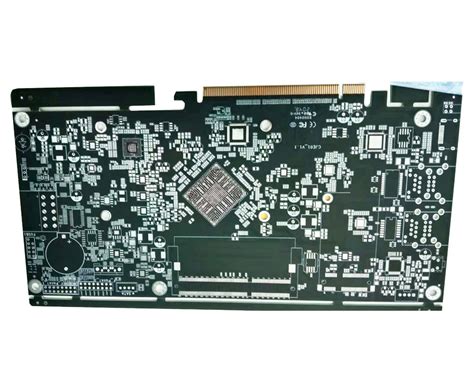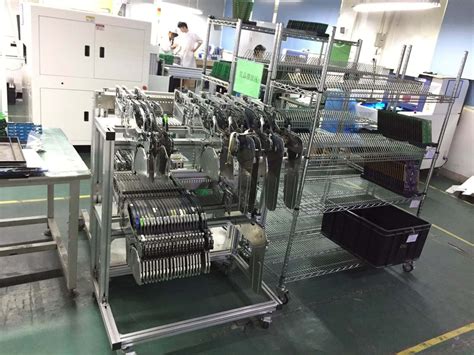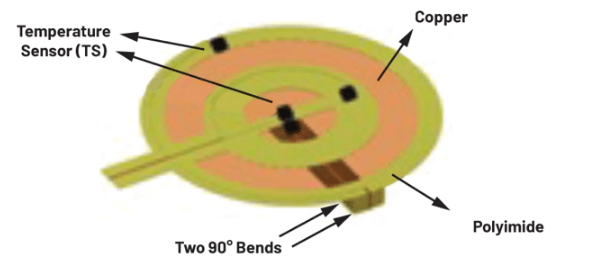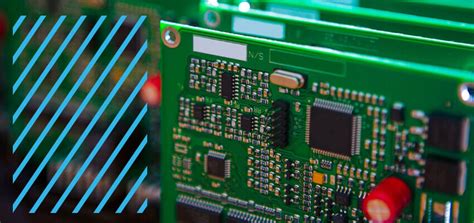Efficient Solutions for Industrial PCB Assembly Processes

Key Takeaways
In understanding the landscape of industrial PCB assembly, it’s essential to grasp the fundamental principles driving the production processes. Effective PCB assembly requires an integration of various elements, including component placement, soldering techniques, and testing protocols. By focusing on streamlining workflows and adopting industry best practices, manufacturers can significantly improve their efficiency. A pivotal method involves embracing automation, which not only enhances the precision of PCBA processes but also allows for faster production cycles. The adoption of innovative technologies, such as robotics and advanced inspection systems, further supports achieving optimal outcomes in pcb assembly tasks while maintaining high quality. To truly excel in this field, businesses should implement comprehensive quality control measures throughout every stage of production. This will ensure that each unit meets stringent standards, thereby bolstering overall customer satisfaction and reducing potential costs associated with defects. Understanding and applying these key strategies will pave the way for a more successful and efficient approach to industrial PCB assembly operations.

Understanding the Basics of Industrial PCB Assembly
In the realm of electronics manufacturing, understanding the pcb assembly process is crucial for achieving optimal results. PCB assembly, often referred to as PCBA, encompasses a series of steps that transform a bare printed circuit board into a fully functional electronic device. This process includes critical tasks such as component placement, soldering, and inspection. Each stage must be executed with precision to ensure that the final product meets the required specifications and functions effectively in its intended application.
At its core, industrial PCB assembly involves various techniques and methodologies tailored to enhance efficiency and maintain high-quality standards. Implementing effective strategies at this phase can significantly boost productivity, reduce production costs, and minimize waste. As part of this optimization process, manufacturers can employ various technologies such as automated placement machines and advanced soldering techniques. Incorporating automation not only streamlines the workflow but also reduces human error, which is paramount in achieving consistent quality across PCBA products.
“Embracing automation within your pcb assembly operations can lead to remarkable gains in efficiency while maintaining quality control.”
Furthermore, it’s essential to recognize that ongoing training and development for personnel working in pcb assembly operations can foster a culture of continuous improvement. By equipping team members with knowledge about current best practices and emerging technologies, businesses can ensure their processes remain competitive within an ever-evolving market landscape. Understanding these foundational elements of industrial PCB assembly is vital for manufacturers striving to optimize their production lines while fulfilling market demands effectively.

Key Strategies for Optimizing PCB Assembly Processes
Optimizing pcb assembly processes is crucial for enhancing overall manufacturing efficiency and achieving superior product quality. One of the key strategies is to implement streamlined workflow management. By analyzing and redesigning the stages in the pcba process, organizations can identify bottlenecks and eliminate unnecessary steps, leading to faster turnarounds and improved output.
Another essential approach involves investing in automation technologies. Utilizing automated systems for soldering, component placement, and visual inspections can significantly reduce human errors while increasing production speed. This transition to automation should be paired with regular training sessions for personnel to ensure that team members are proficient in operating new equipment.
Furthermore, maintaining a consistent supply chain is vital. By ensuring that components are sourced from reliable suppliers, manufacturers can avoid delays associated with material shortages. Additionally, leveraging software solutions that facilitate real-time monitoring of inventory levels can help companies maintain a steady flow of materials necessary for production.
Lastly, adopting lean manufacturing principles—such as continuous improvement (Kaizen) and just-in-time (JIT) inventory management—can lead to substantial cost reductions while maintaining high-quality standards in pcb assembly operations.
| Strategy | Benefits | Implementation Tips |
|---|---|---|
| Workflow Management | Enhanced efficiency through streamlined processes | Regularly review processes |
| Automation Technology | Reduced errors & increased speed | Invest in training for staff |
| Strong Supply Chain Management | Minimized delays due to reliable sourcing | Monitor inventory levels using software |
| Lean Manufacturing Principles | Cost reduction without compromising quality | Apply Kaizen methods regularly |
By incorporating these strategies into industrial PCB assembly operations, manufacturers can not only optimize their processes but also position themselves competitively in the market.
The Role of Automation in PCB Manufacturing Efficiency
In today’s fast-paced manufacturing environment, automation plays a crucial role in enhancing the efficiency of PCB assembly processes. The integration of automated systems not only streamlines operations but also significantly boosts productivity. By reducing the reliance on manual labor, manufacturers can minimize human error, leading to higher quality and more consistent results in PCBA outcomes. Moreover, automated technology allows for rapid adjustments in production lines, enabling a quicker response to fluctuating market demands. This adaptability is essential for maintaining competitive advantage and achieving operational excellence. Utilizing advanced robotics and automated inspection systems further ensures that each unit meets stringent quality standards while also keeping production costs under control. As a result, companies that embrace automation in their PCB assembly operations often realize substantial gains in efficiency, making them better equipped to meet customer expectations while optimizing resource allocation.

Cost Reduction Techniques in Industrial PCB Assembly
In the ever-evolving landscape of industrial PCB assembly, organizations are continuously searching for methods to enhance efficiency and minimize expenses. One effective strategy involves a thorough analysis of the entire PCBA process, identifying areas where waste can be reduced. For instance, streamlining the supply chain by negotiating better bulk purchase agreements and choosing reliable suppliers can significantly decrease material costs. Additionally, adopting lean manufacturing principles enables companies to eliminate unnecessary steps in the assembly workflow, thereby optimizing resource utilization. Implementing robust inventory management systems is another vital technique that not only aids in reducing excess stock but also ensures that components are readily available, preventing production delays. Furthermore, investing in employee training cultivates a skilled workforce capable of efficiently operating advanced machinery and adhering to quality standards, which ultimately reduces rework rates and rejects associated with poor craftsmanship. Lastly, leveraging the power of technology, such as real-time monitoring systems and data analytics tools, can provide valuable insights that drive continuous improvement efforts within the PCB assembly environment. By embracing these innovative cost reduction techniques, manufacturers can not only enhance their operational efficiencies but also position themselves competitively within the market.


Innovative Technologies Shaping the Future of PCB Assembly
The landscape of PCB assembly is undergoing a transformative shift, driven by the introduction of innovative technologies that enhance efficiency and precision. One of the most significant advancements is the integration of advanced robotics in the assembly line. These robots are capable of performing repetitive tasks with unparalleled accuracy, leading to reductions in human error and increases in throughput. Moreover, Industry 4.0 concepts, such as Internet of Things (IoT) connectivity, allow manufacturers to monitor their PCBA processes in real-time, providing crucial data that can inform quick adjustments to optimize production workflows.
Additionally, machine vision systems are increasingly utilized to ensure the quality control aspects of PCB assembly. These systems can swiftly inspect every component placement on a board for errors or defects, ensuring that only high-quality products proceed through the manufacturing process. Furthermore, software solutions that employ artificial intelligence are being developed to analyze production data and predict maintenance needs before equipment failures occur, thereby minimizing downtime.
The implementation of these technologies not only boosts productivity but also allows for greater flexibility in manufacturing. Customization and rapid prototyping capabilities are vastly improved, enabling manufacturers to respond swiftly to market demands without compromising on quality. Ultimately, these innovative technologies position PCBA as a more efficient and reliable sector within modern manufacturing industries.
Best Practices for Maximizing Productivity in PCB Manufacturing
In the realm of pcb assembly, maximizing productivity is crucial for maintaining a competitive edge. One effective approach is the implementation of lean manufacturing principles, which focus on minimizing waste while optimizing processes. This can be achieved by analyzing the entire pcba workflow, identifying bottlenecks, and utilizing techniques such as Just-In-Time (JIT) production to ensure that materials arrive precisely when needed. Incorporating automation also significantly enhances efficiency; automated machines can precisely handle repetitive tasks, thereby reducing human error and increasing output rates. Moreover, investing in advanced technologies like pick-and-place machines and 3D solder paste inspection systems can lead to streamlined operations that improve accuracy and reduce production time. Employees should also be continuously trained on new technologies and processes to ensure they are well-equipped to adapt to evolving methods in the pcb assembly industry. By fostering a culture of continuous improvement and embracing innovative solutions, manufacturing plants can effectively enhance their productivity levels while maintaining high-quality standards in pcba production.
Case Studies: Successful Implementations of Efficient PCB Solutions
In exploring the landscape of industrial PCB assembly, several case studies stand out, exemplifying successful implementations of efficient PCB solutions that not only streamline operations but also yield significant improvements in both quality and cost-efficiency. One notable instance involved a leading electronics manufacturer that sought to enhance its PCBA processes. By integrating advanced automation technologies into their assembly line, they achieved a remarkable reduction in production time and a notable increase in throughput. The introduction of smart manufacturing tools allowed for real-time monitoring and adjustments, leading to reduced waste and improved accuracy in component placement.
Moreover, another case highlighted the successful adoption of modular assembly techniques that facilitated flexibility and adaptability in production. This approach enabled the company to implement changes swiftly without overhauling entire production lines, thereby maintaining continuity and minimizing downtime. Quality control measures were also enhanced through this strategy, as each module could be tested independently before final assembly.
These examples illustrate how innovative practices in PCB assembly not only address current challenges but also set a benchmark for operational excellence across the industry. By evaluating these successful implementations, other organizations can glean insights into optimizing their own PCBA processes, ultimately driving forward productivity and competitiveness.
Conclusion
In summary, the field of industrial PCB assembly is continually evolving, driven by technological advancements and an increasing demand for efficiency. The integration of automation and innovative technologies plays a crucial role in enhancing pcba processes, significantly improving manufacturing capabilities. By implementing best practices and focusing on key strategies such as cost reduction techniques and quality control measures, organizations can achieve remarkable productivity gains. Moreover, the adoption of pioneering solutions not only meets today’s manufacturing challenges but also lays the groundwork for future development in PCB assembly. As businesses strive for excellence, embracing these efficient solutions will ensure they remain competitive in the ever-evolving landscape of electronics manufacturing. By prioritizing both quality and speed, manufacturers can deliver high-quality results while optimizing their resources effectively.
FAQs
What is PCB assembly?
PCB assembly, often referred to as PCBA, is the process of connecting electronic components to a printed circuit board (PCB) to create a functional electronic device. This involves soldering various components onto the board, ensuring proper connections.
What are the key components used in PCB assembly?
The main components include resistors, capacitors, integrated circuits (ICs), and connectors. Selecting high-quality components is essential for achieving optimal performance in PCB assembly.
How can I optimize my PCB assembly process?
To enhance efficiency in your PCBA, consider automated equipment for component placement and soldering. Implementing thorough quality control measures and maintaining precise inventory management also greatly contributes to streamlining the process.
What role does automation play in PCB assembly?
Automation significantly increases production speed and accuracy in industrial PCB assembly, reducing human error and enhancing overall consistency in product quality.
How can I ensure quality control in my PCB assembly operations?
Implement rigorous testing procedures at various stages of the PCBA process. Techniques such as visual inspections, automated optical inspection (AOI), and functional testing are vital for ensuring high-quality output.
By exploring these common inquiries regarding industrial PCB assembly, manufacturers can gain insights into effective methods for maximizing efficiency and ensuring successful production outcomes. For further information on effective strategies, please visit: Efficient Solutions for Industrial PCB Assembly.







